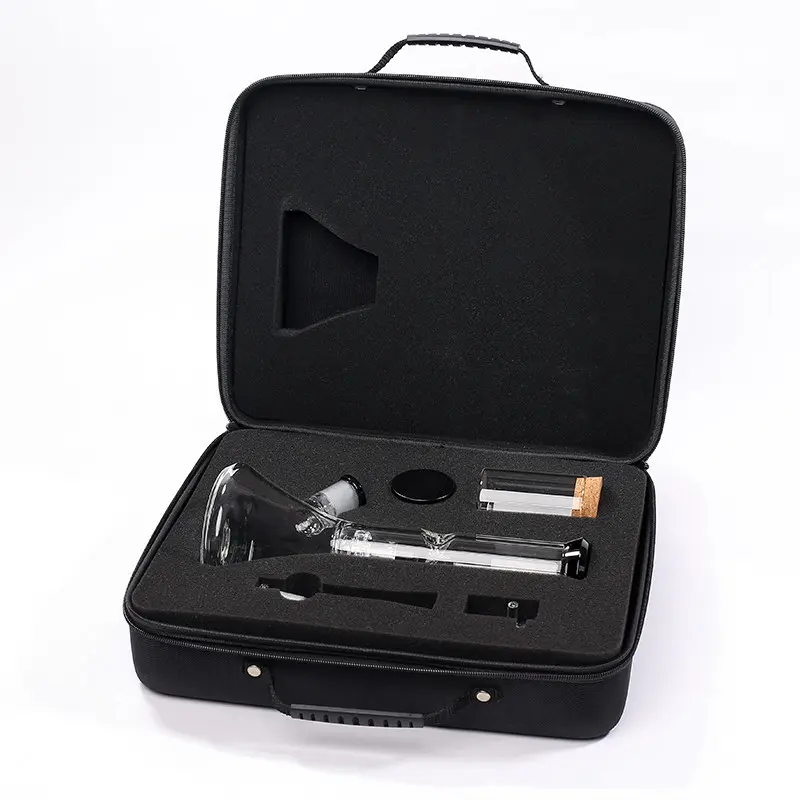Quality Inspection of EVA Tool Bags: A Key Step to Ensuring Superior Quality
In today’s global market, EVA tool bags are favored by many wholesale buyers for their lightweight, durable, and shockproof properties. However, earning long-term customer trust requires quality.
I. Characteristics and Advantages of EVA Tool Bags
EVA (ethylene vinyl acetate) material occupies a key position in tool bag manufacturing due to its unique physical and chemical properties. It offers excellent softness and elasticity, surface gloss, and chemical stability. EVA tool bags not only withstand certain external forces but also offer high and low temperature resistance and dimensional stability. Furthermore, EVA’s environmental friendliness aligns with modern consumers’ pursuit of sustainable development.
II. Production Process of EVA Tool Bags
Understanding the production process is fundamental to quality inspection. EVA tool bag production typically involves the following steps:
Raw Material Preparation: Select high-quality EVA sheets and conduct rigorous inspections to ensure they are free of impurities and contamination.
Lamination: The outer fabric, EVA material, and lining are bonded together using glue or hot-melt technology. Cutting: According to the design drawings, the laminated material is cut into small pieces of the required size.
Molding: The cut material is formed using a hot or cold pressing process.
Sewing and Assembly: The formed EVA components are sewn together with auxiliary materials such as zippers and fabric, and necessary reinforcement is performed.
Surface Decoration: This includes logo printing and anti-slip texture processing.
Quality Inspection: Finished products undergo rigorous physical property testing and appearance inspection.
Packaging and Shipping: Qualified products are packed in dust-proof bags and shipped to warehouse. Some customers may require a quality inspection report and material description.
III. Key Steps in Quality Inspection
(I) Raw Material Inspection
The quality of raw materials directly affects the quality of the final product. When purchasing EVA sheets, choose reputable suppliers and request relevant quality assurance documents, such as SGS test reports. Basic tests such as density and hardness are performed on the raw materials to ensure that they meet product requirements.
(II) Quality Control During the Production Process
Strict quality control is required at every stage of the production process. For example, during the lamination process, temperature and pressure must be controlled to prevent bubbles or delamination. During sewing, attention must be paid to seam density and reinforcement to ensure product durability.
(III) Finished Product Inspection
Finished product inspection is the final line of defense in quality control. Physical property testing includes spot checks of finished product density, hardness, and impact resistance to ensure they meet load-bearing and shock-resistant requirements. Appearance inspection uses visual inspection and gaging to confirm edge flatness, printing clarity, and consistency with the design drawings. Defective products must be returned for repair or scrapped.
IV. Quality Standards and Certifications
To meet the needs of diverse markets, EVA tool kits must comply with a range of quality standards and certifications. For example, the RoHS standard requires that products be free of hazardous substances such as lead and mercury. Furthermore, some customers may require ISO 9001 quality management system certification. These standards and certifications not only enhance product competitiveness but also provide consumer safety.
V. The Importance of Quality Inspection
A rigorous quality inspection process is crucial for EVA tool kit manufacturers. It not only helps to identify problems in the production process and make timely improvements, but also ensures that every tool kit can meet customer expectations. Through high-quality products, manufacturers can build a good brand image and win the long-term trust of customers.
Post time: Aug-07-2025






